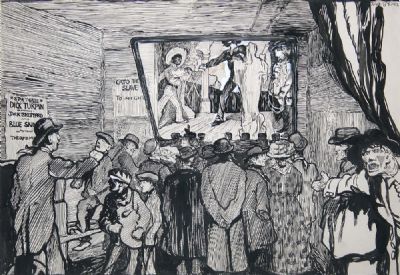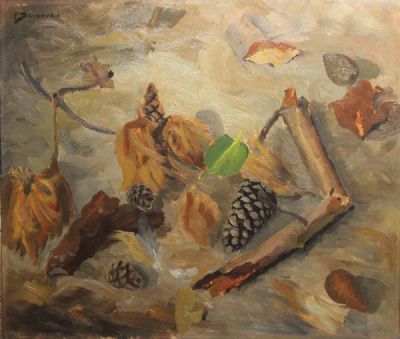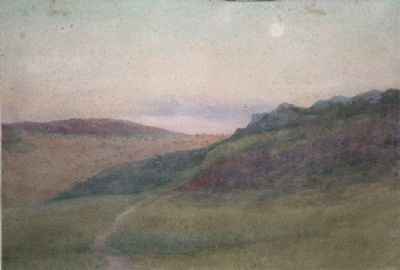Jack Butler Yeats
Lot 50
Jack Butler Yeats RHA 1871-1957 GAFF IN THE EAST END OF LONDON (c.1900) Indian ink, 14'' x 20 1/2'' (35.5 x 52cm), signed Provenance: Theo Waddington Fine Art, London (labels verso) The heyday of the Gaff or Penny Theatres was a few decades before ...
Read more
 Lot 50
Jack Butler Yeats
Estimate: €8,000 - €12,000
Result: €8,200
Lot 50
Jack Butler Yeats
Estimate: €8,000 - €12,000
Result: €8,200
 Lot 50
Jack Butler Yeats
Lot 50
Jack Butler Yeats
Estimate:
€8,000 - €12,000
Jack Butler Yeats RHA 1871-1957 GAFF IN THE EAST END OF LONDON (c.1900) Indian ink, 14'' x 20 1/2'' (35.5 x 52cm), signed Provenance: Theo Waddington Fine Art, London (labels verso) The heyday of the Gaff or Penny Theatres was a few decades before Yeats made this illustration. He was aware of their demise when he made this. They were notorious but popular establishments in the East end of London in the nineteenth century where they were set up in outhouses or in a range of available buildings. A penny or halfpenny secured the customer entrance for which they could partake of light refreshments and a variety of entertainment. The middle classes regarded these businesses with some horror, considering them to be unregulated spaces in which impressionable youths could easily be corrupted and which tended to attract the lower classes in large numbers. The stages were constructed so as to allow as much room as possible for the audience. This facilitated the substantial crowds and secured the owner a decent return on the performance. Popular plays often included scenes of violence and criminal behaviour, with highwaymen being especially well-liked characters. (The bill for a forthcoming performance of Dick Turpin is pasted on the wall in Yeats's Gaff). Another recurring theme of the melodramas was the African slave and in this drawing, Cato the Slave is being performed. It is evident that the lead role is played by a white actor who has blackened up for the part. In the Gaff a mixed and rather sedate audience of smartly dressed middle aged men and women enjoy the play. They keep their coats and hats on indicating the brevity of the performance and the informality of the venue. A lady carries a large plate of foodwhile a man at the back of the audience gazes upwards, showing as much curiosity about the setting as the activity on stage. On the right hand side a toothless character draws back a large curtain and gestures us in. Behind him a man loiters apart from the audience, enjoying a smoke. On the other side of the hall a group of young boys are trying out their boxing skills with one of them receiving a rather violent punch on the chin. Through the use of cross-hatching in Indian ink and in the application of white highlights on the stage and in the left foreground, Yeats recreates the bizarre and fantastic atmosphere of the theatre. The pen and ink drawing is one of a series which Yeats intended to publish as a book, Pastimes of the Londoners. In the end he did not secure a publisher but some of the series appeared as illustrations in the Manchester Guardian in 1905. C.P. Scott, the editor of the newspaper, may not have considered this one to be suitable, as he expressed caution over the nature of some of the imagery in the illustrations which he thought might shock the public. The boys trying their hand at boxing, in particular, could have been considered unsuitable for a family paper. Roisin Kennedy, October 2013
Sign-up to our auction alert
Signup for personalised Irish art recommendations, invitations to viewings and auctions, articles and more.





